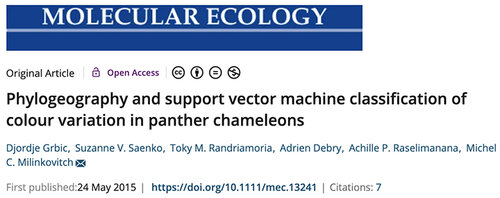There has been much discussion over just what Furcifer pardalis is. Are they morphs or are they actually separate species? A recent paper portrayed their findings as suggesting there are multiple species. When presented with something like this I always like to get some expert opinions. So in ep 145 of the Chameleon Academy Podcast I bring on Dr. Mark Scherz, who is a scientist working on Madagascar reptiles and amphibians, to discuss this paper and Furcifer pardalis. I am disappointed to say there are no definitive answers, but this journey of following the work of evolutionary biologists as they figure these things out is exciting!
To listen, find episode 145 of the Chameleon Academy Podcast on any podcast app, download the free Chameleon Academy app (on either Google Play or Apple App Store), or listen online at https://chameleonacademy.com/ep-145-the-panther-chameleon-species-with-dr-mark-scherz/
Or else, just listen in here on the Chameleon Forums!
If you would like to reference the paper we are talking about it is open to the public and can be seen here:
https://onlinelibrary.wiley.com/doi/full/10.1111/mec.13241


To listen, find episode 145 of the Chameleon Academy Podcast on any podcast app, download the free Chameleon Academy app (on either Google Play or Apple App Store), or listen online at https://chameleonacademy.com/ep-145-the-panther-chameleon-species-with-dr-mark-scherz/
Or else, just listen in here on the Chameleon Forums!
If you would like to reference the paper we are talking about it is open to the public and can be seen here:
https://onlinelibrary.wiley.com/doi/full/10.1111/mec.13241







